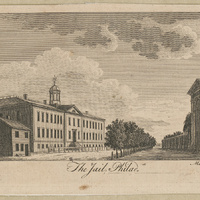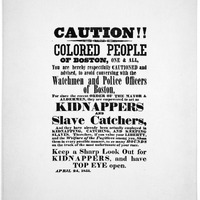The Carceral State: Legal Histories of American Unfreedom
Summary
The carceral system in the United States has a long history of criminalizing Blackness. At the end of 2023, 37% of people incarcerated in jails and prisons identified as Black and 23% identified as Hispanic. Another 10% of incarcerated people identified as Asian, Native American, or Hawaiian, so nearly 70% of incarcerated people are also a person of color. Non-European have long been associated with some level of savagery, and the U.S. has a history of the selective enforcement of criminal codes against non-white people.
The first prisons in the U.S. were born out of enlightenment discussions of natural rights and bodily integrity in the late 18th century. These prisons were experimental, as they moved beyond punishment and were aimed at rehabilitating prisoners and turning criminals into citizens. These new prisons called for the strict maintenance of order, prisoner isolation, and forced labor in contrast to old prison systems that used corporal punishment to manage prisoners. Early American prisons were designed for prisoners to be housed alone and only gather together for work. The Walnut Street Prison in Philadelphia was the first of these new, experimental prisons. It opened in 1790 and was intended to be egalitarian. However, within the first five years of its operation, there is evidence that Black people were given longer sentences than white people for similar crimes.
A Black woman named Ellen was sentenced to a year and given a substantial fine for stealing a shift and handkerchiefs. It was assumed that the shift was meant to aid Ellen in escaping from service because she could wear it and pretend to be someone else. When compared to Margaret Field, a white woman sentenced in the same year for the same crime, the criminalization of Blackness in this supposedly egalitarian facility is clear. Margaret Field was only sentenced to three months and given no fine.
The Fugitive Slave Act of 1850 further increased the incarceration of Black bodies. This new fugitive slave law left all Black people in the North, even those who had been born free, at risk of being enslaved and sent into the South. Abolitionists in Boston posted notices to warn Black people not to engage with law enforcement. Policing was not innocent or neutral. Interactions with law enforcement could result in enslavement.
Forced labor while incarcerated continues to be debated in modern politics. In the 2024 election, Californians did not pass Proposition 6, which would have ended involuntary servitude in prisons, though other states have passed similar propositions in recent years. Existing into the 21st century, chain gangs have been the classic image of Black involuntary servitude. Black artists have long used this image in their work to show a criminal justice system that is not a justice system at all. In the blues song “Chain Gang Blues,” Ma Rainey gives voice to the feeling of forced labor as punishment for being Black rather than for a real crime.
- Title
- The Carceral State: Legal Histories of American Unfreedom
- Description
- This teaching module discusses race, the carceral state, and the criminalization of Blackness, featuring a webinar with legal historian Taja-Nia Henderson.
- Contributor
- Professor Taja-Nia Henderson, Rutgers University-Newark
- Documents
-
 Webinar - The Carceral State: Legal Histories of American Unfreedom (2024)
Webinar - The Carceral State: Legal Histories of American Unfreedom (2024)
-
 Walnut Street Prison (1789)
Walnut Street Prison (1789)
-
 Fugitive Slave Act of 1850
Fugitive Slave Act of 1850
-
 Broadside Reacting to the Fugitive Slave Act (1851)
Broadside Reacting to the Fugitive Slave Act (1851)
-
 California Proposition 6 (2024)
California Proposition 6 (2024)
-
 Chain Gang Blues (1925)
Chain Gang Blues (1925)
-
 13th Amendment to the United States Constitution (1865)
13th Amendment to the United States Constitution (1865)
-
 Terry v. Ohio (1968)
Terry v. Ohio (1968)
- Legal Concept
- Incarceration
- Spatial Coverage
- United States
- Title
- The Carceral State: Legal Histories of American Unfreedom
- Description
- This teaching module discusses race, the carceral state, and the criminalization of Blackness, featuring a webinar with legal historian Taja-Nia Henderson.
- Contributor
- Professor Taja-Nia Henderson, Rutgers University-Newark
- Documents
-
 Webinar - The Carceral State: Legal Histories of American Unfreedom (2024)
Webinar - The Carceral State: Legal Histories of American Unfreedom (2024)
-
 Walnut Street Prison (1789)
Walnut Street Prison (1789)
-
 Fugitive Slave Act of 1850
Fugitive Slave Act of 1850
-
 Broadside Reacting to the Fugitive Slave Act (1851)
Broadside Reacting to the Fugitive Slave Act (1851)
-
 California Proposition 6 (2024)
California Proposition 6 (2024)
-
 Chain Gang Blues (1925)
Chain Gang Blues (1925)
-
 13th Amendment to the United States Constitution (1865)
13th Amendment to the United States Constitution (1865)
-
 Terry v. Ohio (1968)
Terry v. Ohio (1968)
- Legal Concept
- Incarceration
- Spatial Coverage
- United States